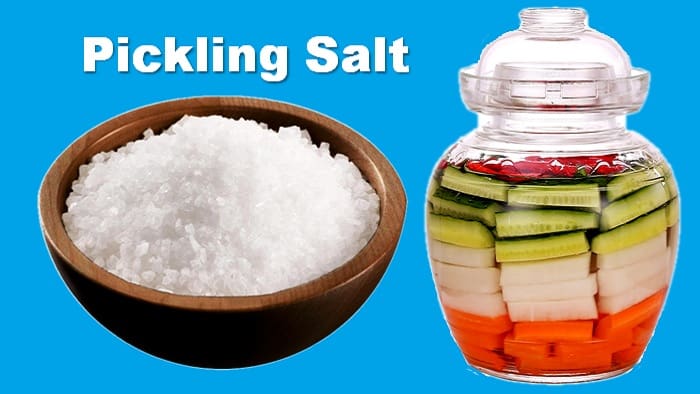
Japan and China are two of the most powerful countries in Asia. Both countries have a rich culture and a fascinating history that attract millions of tourists every year. Japan and China also have some of the biggest cities in the world that are centers of commerce, culture, and politics. In this article, we will explore the capital cities of Japan and China.
Capital of Japan

The capital of Japan is Tokyo. Tokyo is one of the most populous cities in the world, with over 13 million people living in the city. Tokyo is also the center of politics, culture, and finance in Japan. The city has a rich history, and its modern architecture and technology are world-renowned.
One of the most famous landmarks in Tokyo is the Tokyo Tower, which is a communications and observation tower that is 333 meters tall. Another famous landmark is the Imperial Palace, which is the residence of the Emperor of Japan. The palace is surrounded by beautiful gardens and parks that attract tourists from all over the world.
Tokyo is also known for its cuisine, which includes sushi, ramen, and tempura. The city has many restaurants and food stalls that offer delicious and affordable food.
Capital of China
The capital of China is Beijing. Beijing is one of the oldest and most populous cities in China, with over 21 million people living in the city. Beijing is also the center of politics, culture, and education in China.
One of the most famous landmarks in Beijing is the Great Wall of China, which is a series of walls and fortifications that were built to protect China from invaders. Another famous landmark is the Forbidden City, which is a palace complex that was the home of the Emperor of China for almost 500 years.
Beijing is also known for its cuisine, which includes Peking duck, dumplings, and noodles. The city has many restaurants and food stalls that offer delicious and affordable food.
Conclusion
Japan and China are two of the most fascinating countries in the world. Their capital cities, Tokyo and Beijing, are centers of culture, commerce, and politics. Both cities have a rich history and a vibrant culture that attract millions of tourists every year. Whether you are interested in food, culture, or history, Tokyo and Beijing are definitely worth a visit.
Related video of Capital of Japan and China

Candy eggs have been a staple of Easter celebrations for years, but did you know that they are actually illegal in the United States? That's right, these colorful treats that we all love are not allowed to be sold or distributed in the US. But why is that? Let's take a closer look.
The Reason Behind the Ban
The reason candy eggs are banned in the US is due to a law that was passed in 1938, called the Federal Food, Drug, and Cosmetic Act. This law prohibits the sale of any candy that contains a "non-nutritive object", which is defined as any object that is not food and has no nutritional value.
What Are Non-Nutritive Objects?

Non-nutritive objects can include anything from plastic toys to small trinkets. In the case of candy eggs, the ban refers to the small plastic toys or trinkets that are often found inside the eggs. These objects are seen as potential choking hazards to young children, and as such, are not allowed to be sold in the US.
Exceptions to the Rule
While candy eggs themselves are banned, there are exceptions to the rule. For example, candy eggs that do not contain non-nutritive objects are allowed to be sold in the US. Additionally, candy eggs that are sold as part of a larger set, such as an Easter basket, are also allowed as long as the non-nutritive objects are not sold separately.
Alternative Easter Treats

If you're looking for an alternative to candy eggs, there are plenty of other Easter treats to choose from. Some popular options include chocolate bunnies, jelly beans, and marshmallow chicks. These treats do not contain non-nutritive objects and are therefore allowed to be sold in the US.
The Future of Candy Eggs in the US

While candy eggs are currently banned in the US, there is a possibility that this could change in the future. Some manufacturers are working on creating candy eggs that do not contain non-nutritive objects, which would make them legal to sell in the US. However, until this happens, candy eggs will remain illegal in the United States.
In Conclusion
Candy eggs may be a favorite Easter treat for many, but they are unfortunately illegal in the US due to the potential choking hazard of non-nutritive objects. While there are exceptions to the ban, such as candy eggs that do not contain non-nutritive objects, it is important to be aware of the risks associated with these treats. In the meantime, there are plenty of other delicious Easter treats to enjoy!
Related video of Candy Eggs Illegal In US
Ear wax is a common problem faced by many people. It can cause discomfort, hearing loss, and other complications. There are many ways to remove ear wax, but one of the most popular methods is the use of candle cones. Candle cone ear wax removal is a natural and safe way to get rid of excess ear wax. In this article, we will discuss the benefits, risks, and procedure of candle cone ear wax removal.
What are Candle Cones?

Candle cones are hollow tubes made of fabric, usually cotton or linen, that are coated with wax. They are also known as ear candles. Candle cones are designed to be lit at the top and then placed in the ear canal. As the candle burns, it creates a vacuum that draws the ear wax out of the ear canal. It is said to be a painless and relaxing process.
Benefits of Candle Cone Ear Wax Removal

Candle cone ear wax removal has several benefits over other methods:
- Non-invasive: Candle cone ear wax removal is a non-invasive method of removing ear wax. It does not require any instruments or tools to be inserted into the ear canal.
- Natural: Candle cone ear wax removal uses natural ingredients, such as wax and cotton, to remove ear wax. It does not use any chemicals or drugs.
- Relaxing: Many people find candle cone ear wax removal to be a relaxing experience. The warmth of the candle and the gentle suction can be soothing.
- Safe: When done correctly, candle cone ear wax removal is safe for most people. It does not cause any damage to the ear canal or eardrum.
Risks of Candle Cone Ear Wax Removal

While candle cone ear wax removal has many benefits, it also has some risks:
- Burns: The burning candle can cause burns to the skin or hair around the ear if not done carefully.
- Candle wax in ear: There is a risk that the candle wax can drip into the ear canal and cause blockages or other complications.
- Ear infections: If the ear canal is already infected, candle cone ear wax removal can make the infection worse.
- Injuries: If the candle is not placed correctly or if there is any movement during the process, it can cause injuries to the ear canal or eardrum.
The Procedure of Candle Cone Ear Wax Removal

The procedure of candle cone ear wax removal is simple:
- Lie down on your side with the affected ear facing up.
- Place the candle cone in your ear canal, making sure it is secure.
- Light the top of the candle and let it burn for about 10-15 minutes.
- After the candle has burned down to a certain point, remove it from your ear and extinguish it in a bowl of water.
- Repeat the process with the other ear if necessary.
Conclusion
Candle cone ear wax removal is a natural and safe way to remove excess ear wax. However, it is important to be aware of the risks and to follow the procedure carefully. If you are unsure about using candle cones or if you have any concerns about your ear wax, it is best to consult a doctor or a professional ear wax removal specialist.
Related video of Candle Cone Ear Wax Removal

Beer is an integral part of Canadian culture. In fact, Canada is the third-largest producer of beer in the world. However, not all beers are created equal, and one of the most important factors to consider is alcohol content. In this article, we'll explore the world of Canadian beer alcohol content, from light to heavy, and everything in between.
What is Alcohol Content?

Alcohol content, also known as alcohol by volume (ABV), is a measure of the amount of alcohol present in a beverage. It is expressed as a percentage of the total volume of the beverage. For example, a beer with an ABV of 5% means that 5% of the total volume of the beer is pure alcohol.
Canadian Light Beers

Canadian light beers are generally lower in alcohol content, with an ABV of around 2.5% to 4%. These beers are often marketed as "session" beers, which means they are meant to be consumed over a longer period of time without getting too drunk. Examples of Canadian light beers include Molson Canadian 67 and Labatt Blue Light.
Canadian Lager Beers

Canadian lager beers are the most common type of beer in Canada, and they typically have an ABV of around 4% to 5%. These beers are often light in color and have a crisp, refreshing taste. Examples of Canadian lager beers include Molson Canadian and Labatt Blue.
Canadian Ale Beers

Canadian ale beers are generally higher in alcohol content than lagers, with an ABV of around 5% to 7%. These beers have a more complex flavor profile and are often darker in color. Examples of Canadian ale beers include Alexander Keith's India Pale Ale and Sleeman Cream Ale.
Canadian Stout and Porter Beers

Canadian stout and porter beers are the heaviest and most flavorful beers, with an ABV of around 5% to 8%. These beers are often dark in color and have a rich, roasted flavor. Examples of Canadian stout and porter beers include St. Ambroise Oatmeal Stout and Mill Street Cobblestone Stout.
Conclusion
Canadian beer alcohol content varies widely depending on the type of beer. From light lagers to heavy stouts, there is a beer for every taste and occasion. Whether you're looking for a refreshing drink on a hot summer day or a warming sip on a cold winter night, Canadian beer has got you covered.
Related video of Canadian Beer Alcohol Content

Canada Post is a postal service company that operates in Canada. It is responsible for delivering mails and packages to different destinations within the country and around the world. However, there are certain situations where a package or mail may be returned to the sender. This article will provide information on why Canada Post item is returned to sender and what to do when it happens.
Reasons why Canada Post item is returned to sender

There are several reasons why a Canada Post item may be returned to the sender. Some of these reasons include:
Incorrect Address

If the address provided by the sender is incorrect or incomplete, the package or mail may be returned to the sender. It is important to ensure that the address provided is accurate and complete to avoid this situation.
Unclaimed Package

If the recipient fails to claim the package within the specified period, the package may be returned to the sender. It is important to ensure that the recipient is aware of the package and its delivery timeline to avoid this situation.
Insufficient Postage

If the sender fails to provide sufficient postage for the package or mail, it may be returned to the sender. It is important to ensure that the correct postage is provided to avoid this situation.
Restricted Items

If the package or mail contains restricted items, it may be returned to the sender. It is important to ensure that the items being shipped are allowed by Canada Post to avoid this situation.
What to do when a Canada Post item is returned to sender

When a Canada Post item is returned to sender, there are several steps that can be taken:
Contact Canada Post

The first step is to contact Canada Post to determine the reason for the return and how to resolve the issue. Canada Post can be contacted through their website or by phone.
Correct the Address

If the address is incorrect, the sender should correct it and resend the package or mail with the correct address.
Resend the Package

If the package was returned due to insufficient postage or unclaimed package, the sender should resend the package with the correct postage or notify the recipient to claim the package.
Refund

If the package or mail cannot be delivered due to restrictions or other reasons, the sender may be eligible for a refund of the postage fee.
Conclusion
Canada Post item returned to sender can be a frustrating experience for both the sender and recipient. It is important to ensure that the address provided is accurate and complete, sufficient postage is provided, and the items being shipped are allowed by Canada Post. If a package or mail is returned to sender, the sender should contact Canada Post to determine the reason and take the necessary steps to resolve the issue.
Related video of Canada Post Item Returned To Sender

Have you ever wondered if your eyes could sink into your head? The thought of it may seem terrifying, but it's a common question that many people have. The human eye is an incredibly intricate organ, and the idea of it sinking into the head is a valid concern.
What Causes Eyes to Sink into the Head?

There are a few reasons why eyes may appear to sink into the head. One of the most common reasons is aging. As we age, the tissues around the eyes begin to weaken, causing the eyes to appear sunken. This is due to a loss of fat and collagen in the skin around the eyes. The skin becomes thinner, and the underlying muscles weaken, leading to a sunken appearance.
Another reason why eyes may appear sunken is due to dehydration. When the body becomes dehydrated, it loses water from the tissues around the eyes, causing them to become sunken. This is a common occurrence in individuals who suffer from dehydration or who are not drinking enough fluids.
Can Your Eyes Actually Sink into Your Head?

While it's true that the eyes can appear sunken, they cannot actually sink into the head. The eyes are held in place by a complex system of muscles and tissues that keep them in their proper position. It would take a significant amount of force to move the eyes out of their sockets, and this is not something that can happen naturally.
However, there are instances where the eyes may appear to sink due to medical conditions. For example, individuals who suffer from Graves' disease may develop a condition known as Graves' ophthalmopathy. This condition causes the tissues behind the eyes to become inflamed, leading to a sunken appearance.
How to Prevent Eyes from Appearing Sunken
There are several things you can do to prevent your eyes from appearing sunken. One of the most important is to stay hydrated. Drinking plenty of fluids can help keep the tissues around the eyes plump and healthy, preventing them from becoming sunken.
Additionally, eating a healthy diet rich in vitamins and minerals can help support the health of the tissues around the eyes. Foods that are high in vitamin C, vitamin E, and beta-carotene can help keep the skin around the eyes healthy and plump.
If you're concerned about the appearance of your eyes, there are also several cosmetic treatments available. For example, injectable fillers can be used to plump up the tissues around the eyes, reducing the appearance of sunken eyes.
Conclusion
While the thought of eyes sinking into the head can be scary, it's not something that can happen naturally. The eyes are held in place by a complex system of muscles and tissues that keep them properly positioned. However, there are instances where the eyes may appear sunken due to medical conditions or aging. By staying hydrated, eating a healthy diet, and considering cosmetic treatments, you can help prevent your eyes from appearing sunken.
Related video of Can Your Eyes Sink Into Your Head?

Hydrogen peroxide is a common household disinfectant that is widely used for cleaning wounds. It is a colorless and odorless liquid that releases oxygen when it comes in contact with organic material, making it an effective antiseptic. However, the question remains - can you use hydrogen peroxide to clean a wound?
How Does Hydrogen Peroxide Work?

Hydrogen peroxide works by releasing oxygen when it comes in contact with organic material. This oxygen release helps to kill bacteria and other harmful microorganisms that may be present on the wound. The foaming action that occurs when hydrogen peroxide is applied to a wound helps to remove dirt and debris, which can also help to prevent infection.
Is Hydrogen Peroxide Safe To Use On Wounds?
While hydrogen peroxide is effective at killing bacteria and preventing infection, it can also damage healthy tissue. Using too much hydrogen peroxide, or using it too often, can slow down the healing process and cause further damage to the wound. In addition, hydrogen peroxide can cause a burning sensation and may be painful when applied to the wound.
How To Use Hydrogen Peroxide To Clean A Wound?

If you decide to use hydrogen peroxide to clean a wound, it is important to use it properly to avoid causing further damage. Here are the steps to follow:
- Clean your hands thoroughly with soap and water before touching the wound.
- Gently rinse the wound with water to remove any dirt or debris.
- Pour a small amount of hydrogen peroxide onto a clean cotton swab.
- Gently apply the hydrogen peroxide to the wound, being careful not to use too much or apply too much pressure.
- Allow the hydrogen peroxide to foam for a few seconds before wiping away any excess with a clean cotton swab.
- Cover the wound with a sterile bandage or gauze.
When Not To Use Hydrogen Peroxide?

While hydrogen peroxide can be an effective wound cleaner, there are certain situations where it should not be used. These include:
- Deep wounds or puncture wounds - hydrogen peroxide can damage healthy tissue and slow down the healing process in these types of wounds.
- Chronic wounds - long-term use of hydrogen peroxide can cause skin irritation and further damage to the wound.
- Chemical burns - hydrogen peroxide can react with certain chemicals and worsen the burn.
Conclusion
While hydrogen peroxide can be an effective wound cleaner, it should be used with caution. It is important to follow the proper steps and use it in moderation to avoid causing further damage to the wound. If you are unsure about using hydrogen peroxide to clean a wound, it is always best to consult with a healthcare professional.
Related video of Can You Use Hydrogen Peroxide To Clean A Wound?

When it comes to cooking, one of the most important things to consider is the type of salt you use. There are many types of salt available, including pickling salt and kosher salt. But can you substitute one for the other?
What is Pickling Salt?

Pickling salt is a type of salt that is specifically designed for pickling and preserving foods. It is a fine-grained, pure salt that does not contain any additives like iodine or anti-caking agents. This makes it ideal for use in pickling, as it will not discolor the food or affect the flavor.
What is Kosher Salt?

Kosher salt is a type of coarse-grained salt that is commonly used in Jewish cuisine. It gets its name from the fact that it is used in the koshering process, which involves removing the blood from meat. Kosher salt is also used in many other types of cooking, as it has a clean, pure flavor and is easy to handle.
Can You Substitute Pickling Salt For Kosher Salt?

The short answer is no, you cannot substitute pickling salt for kosher salt. While both types of salt are pure and do not contain any additives, they have different grain sizes and densities. This means that they will measure differently and will affect the texture and flavor of the food in different ways.
For example, pickling salt is much finer than kosher salt, which means that it will dissolve more quickly and evenly. This makes it ideal for pickling, as it will ensure that the brine is evenly distributed throughout the food. However, if you were to use pickling salt in a recipe that calls for kosher salt, you would end up with a much saltier dish, as the finer grains would pack more tightly together.
On the other hand, kosher salt has larger grains and a coarser texture, which means that it will add a nice crunch to dishes like roasted vegetables or grilled meats. If you were to use kosher salt in a pickling recipe, however, the larger grains would not dissolve as easily, which could result in unevenly salted food.
Conclusion
While both pickling salt and kosher salt are pure and do not contain any additives, they are not interchangeable. Each type of salt has its own unique texture and flavor, which means that they will affect the final dish in different ways. If a recipe calls for pickling salt, it is important to use pickling salt, and if it calls for kosher salt, it is important to use kosher salt. By doing so, you will ensure that your food turns out as it should, with the perfect texture and flavor.
Related video of Can You Substitute Pickling Salt For Kosher Salt

As technology advances, sending money has become easier and more convenient. However, there are still some people who prefer to send money through mail. The question is, can you send money through mail? The answer is yes, but there are some things you need to know before you do so.
The Risks of Sending Money Through Mail

Sending money through mail can be risky. The biggest risk is mail theft. If someone steals your mail, they can easily take the cash or check you sent. This can be devastating, especially if you were sending a large amount of money.
Another risk is that the mail can get lost. If the envelope containing the cash or check gets lost in the mail, you may never see that money again. This can be frustrating and may cause financial difficulties.
When to Send Money Through Mail

Despite the risks, there are still some situations where sending money through mail is necessary. For example, if you need to send money to someone who does not have a bank account, sending cash or a money order through mail may be the only option.
Another reason to send money through mail is if you need to make a payment to a business that does not accept online payments or credit cards. In this case, you can send a check through mail.
How to Send Money Through Mail

If you decide to send money through mail, there are some steps you can take to minimize the risks. First, make sure you use a secure envelope. Use a padded envelope or a regular envelope with a piece of cardboard inside to prevent the cash or check from being visible from the outside.
Next, make sure you address the envelope correctly. Double-check the address and make sure you have the correct zip code. If the envelope gets lost, the correct address will increase the chances of it being returned to you.
Finally, consider sending the money through certified mail or with a tracking number. This will provide proof that you sent the money and when it was received.
Conclusion
Sending money through mail can be risky, but there are situations where it may be necessary. If you do decide to send money through mail, take the necessary precautions to minimize the risks. Use a secure envelope, address it correctly, and consider sending it with a tracking number.
Related video of Can You Send Money Through Mail

Introduction
When it comes to our identity, our name plays a crucial role. Our name is often the first thing people learn about us, and it can shape how we are perceived by others. However, what happens when we want to change or remove our last name? Is it even possible? In this article, we will explore the topic of last name removal and discuss whether it is a viable option for those looking to change their identity.Why Do People Want to Remove Their Last Name?
There are a variety of reasons why someone might want to remove their last name. For some, it may be because they have a difficult or embarrassing last name that they do not want to be associated with. For others, it may be because they are getting married and want to take their spouse's last name instead. Additionally, some people may want to remove their last name as a way to distance themselves from their family or for personal reasons.Is It Possible to Legally Remove Your Last Name?
In most cases, it is not possible to legally remove your last name. Your last name is a fundamental part of your identity and is included on all of your official documents such as your birth certificate, driver's license, and passport. However, there are some circumstances where a name change may be possible.How Can You Change Your Name?
If you want to change your name, you will need to go through a legal process. The specific requirements for changing your name vary depending on your location, but generally, you will need to fill out a name change petition and file it with your local court. You may also need to pay a fee and provide a valid reason for wanting to change your name.What Are the Requirements for Changing Your Name?
The requirements for changing your name vary depending on your location, but generally, you will need to be over the age of 18 and have no outstanding warrants or legal issues. You may also need to provide proof of your identity and residency.What Are the Benefits of Changing Your Name?
There are several benefits to changing your name. For one, it can help you distance yourself from a difficult or embarrassing last name. Additionally, changing your name can be a way to start fresh and redefine yourself. However, it is important to note that changing your name is a big decision and should not be taken lightly.What Are the Drawbacks of Changing Your Name?
While changing your name can have its benefits, it also has its drawbacks. For one, it can be a complicated and time-consuming process. Additionally, changing your name can be expensive, as you may need to pay court fees and update all of your official documents such as your driver's license and passport. It is also important to consider the impact that changing your name may have on your personal and professional relationships.Can You Remove Your Last Name on Social Media?
While it may not be possible to legally remove your last name, you can remove it on social media platforms such as Facebook and Twitter. This can be a way to maintain some privacy and control over your online identity.Conclusion
In conclusion, while it may not be possible to legally remove your last name, there are options available for those who want to change their name. However, it is important to carefully consider the benefits and drawbacks before making a decision. Ultimately, your name is a fundamental part of your identity, and any changes should be made with careful consideration.Related video of Can You Remove Your Last Name?

Introduction
Pandas are one of the most adorable and fascinating animals in the world. They have a distinctive black and white coat and a round face that makes them look like they are wearing a permanent smile. However, as much as you may love pandas, you may be wondering whether it is possible to own one. In this article, we will explore whether you can own a panda and the legal and ethical implications of doing so.
Can You Own A Panda?
The short answer to this question is no, you cannot own a panda. Pandas are an endangered species, and their protection is paramount to their survival. In addition, pandas are only native to China, and the Chinese government strictly controls their breeding and distribution.
The Legal Implications
As mentioned earlier, pandas are an endangered species, and their protection is taken very seriously by the Chinese government. The Chinese government strictly controls the breeding and distribution of pandas, and only a handful of zoos around the world are authorized to house them. Therefore, owning a panda is illegal, and anyone caught trying to do so can face severe legal consequences.
The Ethical Implications
Even if it were legal to own a panda, there are significant ethical implications to consider. Pandas are wild animals and require a specific habitat and diet to thrive. It would be incredibly challenging to recreate these conditions in a private setting, and the panda would likely suffer as a result. In addition, pandas are social creatures and require interaction with other pandas to maintain their emotional well-being. Isolating a panda in a private setting would be cruel and inhumane.
The Alternative
While you cannot own a panda, there are other ways to support their conservation efforts. One way is to donate to organizations that work to protect pandas and their habitat. Another way is to visit a zoo that houses pandas and learn more about these fascinating creatures.
Conclusion
In conclusion, while it may be tempting to own a panda, it is illegal and unethical to do so. Pandas are an endangered species, and their protection is paramount to their survival. Instead of trying to own a panda, we should focus on supporting their conservation efforts through donations and education.